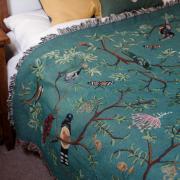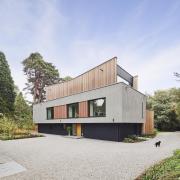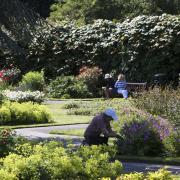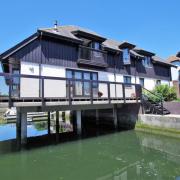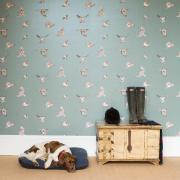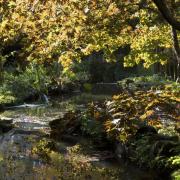If you have a sunny spot in your garden you may like to try creating an exciting, fiery area, such as a border, section of a bed, or container, using ‘hot’ colours of red, orange and yellow. Colours we surround ourselves with have been proven to affect our mood and with everything going on with the world why not bring some sunshine cheer to your environment?

In colour psychology these bright colours really stimulate the senses so consider where you want to place them so not to be too overwhelming. Bright tones, for example, may work well in the front garden along a path to welcome you home, draw the eye in a sun-drenched spot viewed from a window, or be used to encourage sociability in an outdoor dining space, as their energising nature boosts your spirits.

Flowers of course are the obvious first consideration for your planting palette with their myriad of tones in hot and warm shades, however when you look closely at plants you discover that there is colour in all the various parts – petals, anthers, leaves, stems, bark, seedheads and berries. Don’t feel bound to follow rules, let your creativity flow. Each colour you use has an influence on the plants around it and gives you the opportunity to be as dynamic as you like to create energetic areas in your garden. You can experiment and put plants together for their colour while keeping in mind also their horticultural compatibility, such as do they need the same conditions and will they flower at the same time?

Hot colours give energy and warmth. Reds are passionate and add strong focus to an area. They work well with opulent purples or their complementary greens. The tonal range of reds in nature is vast – from the young foliage of roses, berberis foliage, through to clear red poppies or claret and burgundy toned heucheras.

Orange is a colour that more than any other elicits a strong response from the viewer - maligned by some as too garish, and loved by others for the vibrant energy it brings to a space, think of kniphofias (hot pokers) adding life to a sea of parchment grasses. Whether looking back to the 1970’s and retro design, or even further back to the likes of Gertrude Jekyll who used it as an eye-catching way to add life to her borders; orange in its full range of tones, from high-impact flamboyance to pastels, is seeing a renaissance in the garden. The strongest hues work strikingly set against complementary rich blues and purples. Artist Kandinsky said ‘orange is red brought nearer to humanity by yellow.’ Not as aggressive or fiery as red, it adds tropical, sunset tones to combinations.

I always think of yellow as adding bursts of sunlight to a scheme. Cheerful yellow, the brightest colour to the human eye, can work well in golden borders, mixed with oranges and bronzes, or contrasted with blues or purples it really draws the eye. It can be bright and vivacious or toned down to creams, which blend with most colour groupings. Keep your design simple as yellow has lots of impact and bear in mind the angles of light and the glorious transparent effect of backlighting yellow for a radiant glow, especially when the sunlight is low in early spring and autumn.

Whether you create a border on a boundary, along a path or use the same process in beds or even containers within the garden, there is an immense amount of material to get creative with. Don’t forget the impact possibilities also with painted colour on seating, walls, doors, sculpture and pots – think of every object in the garden as part of your colour canvas. You can even have a paint colour made up to match a particular flower shade you love.

Gardens to inspire
• Redenham Park House, Andover, SP11 9AQ
September 20, 10am-1pm, £6
• Wheatley House, Bordon, GU359PA
August 17 and 18, 1.30-5pm, £6
• Blounce House, Hook, RG29 1RX
Open by arrangement until September 8
• Durmast House, Burley, BH24 4AT
Open by arrangement until the end of August
All are open through the National Garden Scheme, ngs.org.uk

Get the look
• For a hot border, blend oranges with reds and yellows of the same intensity.
• Hot colours work best in sunny gardens and as they appear closer they make a garden feel more intimate.
• Many flowers change as they age so take into account from buds onwards and what they are paired with.
• A hot themed corner will glow like embers if the effect is increased by the low, late afternoon light reaching it.
• Try orange in seating areas as it stimulates sociability and conversation. Test out the theory that friends will eat more, be more talkative and stay longer – as orange is used by restaurant owners to encourage greater patronage!

Top 10 summer plants
• Dahlia
• Rudbeckia
• Achillea
• Crocosmia
• Hemerocallis
• Kniphofia
• Helenium
• Canna
• Sunflowers
• Cotinus coggygria








